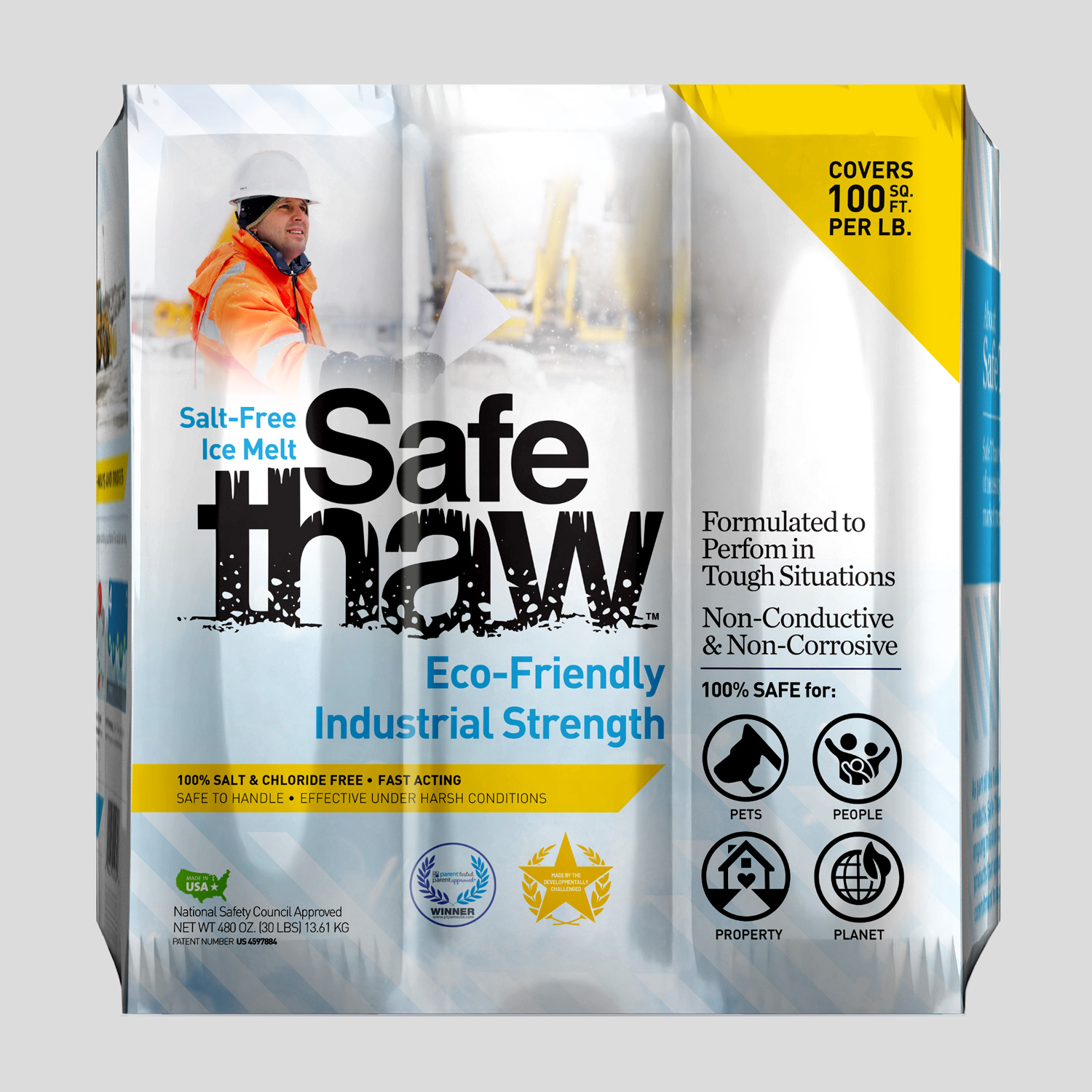Exploring The Science: What Temperature Does Ice Melt At

Have you ever contemplated the moment when ice yields to warmth and transforms into water? It’s a phenomenon that holds not just fascination, but valuable insights. Let’s embark on a journey to uncover the captivating process of ice melting, explore the factors that influence it, and delve into the safer alternatives that exist, such as Safe Thaw.

Blizzards Are Here—Stock Up on Safe Thaw Today!
Safe Thaw was created as the ice management solution for tough winter environments. Ideal in commercial and industrial properties, shops, government agencies, bridges, and construction.
What Temperature Does Ice Melt At
Ice, a solid manifestation of water, has its secret moment of transformation. You might be wondering ‘what temperature does ice melt at”. Well, the pivotal temperature at which ice transitions into its liquid state is precisely 0 degrees Celsius or 32 degrees Fahrenheit. This temperature remains unwavering until the last ice crystal succumbs, after which the temperature begins its ascent as warmth takes over.
Nature’s capriciousness extends even to the melting point of ice. A significant influencer is atmospheric pressure. In high-altitude regions where air pressure is lighter, ice surrenders to melting at slightly lower temperatures. Conversely, in the pressurized realms beneath the oceans, the melting point rises a bit. So the answer to your query-’what temperature does ice melt at’ is that it’s not constant always.
Winter Storms Are Here!
Stay Safe with Our 100% Salt And Chloride-Free, Pet Safe Ice Melt.
Ice Melting And Chemical Intervention
When winter casts its icy spell, science unveils an arsenal of chemicals to aid in melting ice. Calcium chloride, magnesium chloride, and the well-known rock salt join the fray, orchestrating a symphony with water to lower freezing points. In simpler terms, they disrupt ice’s hold at temperatures lower than 0 degrees Celsius.
Decoding Chemical Allies: Examining Different Players
- Calcium Chloride: Often hailed as the ice-melting champion, it can melt ice even at bone-chilling -20 degrees Celsius. However, it comes with a caveat – its corrosive tendencies towards metals and adverse effects on plants.
- Magnesium Chloride: Akin to its calcium counterpart, magnesium chloride woos ice with efficacy, albeit at milder temperatures around -15 degrees Celsius. It’s more considerate towards metals and plant life.
- Rock Salt (Sodium Chloride): The ubiquitous remedy for icy surfaces. While not as potent as other chemicals, it can coax ice to relent at approximately -6 degrees Celsius. Its drawback, however, lies in its impact on surfaces and plant health.
- Safe Thaw: Imagine a hero, but for ice. Safe Thaw emerges as an eco-conscious champion, devoid of toxins, chlorides, and harmful chemicals. It wields its magic works to -2°F, safeguarding pets, plants, and surfaces alike.
The True Champion: Safe Thaw
The crown of ice-melting supremacy belongs to Safe Thaw. With its ability to dissolve ice at lower temperatures and its eco-friendly nature, it stands as the champion choice.
A Different Perspective
While chemicals may seem heroic in their ice-melting prowess, they cast a darker shadow. They harm our surroundings, pets, and the environment. This is where the importance of Safe Thaw emerges – a safer, superior alternative to these harmful solutions.
100% Salt & Chloride-Free Ice Melt for Winter Storm Protection.
In Summation
The enigma of “at what temperature does ice melt” holds a simple answer at 0 degrees Celsius. Yet, the allure of science lets us bend the rules, enabling us to coax ice to relinquish its hold even at colder temperatures. Amid these alternatives, Safe Thaw shines as a prudent choice, combining effectiveness with a deep respect for our planet and its inhabitants.
Try Also Our Other Winter Safety Products:
Safe Paw
The Original and #1 Selling Pet and Child Safe Ice Melt for over 20 years. Guaranteed environmentally safe –It won’t harm animals or children, and it won’t damage your property. That’s Safe Paw. Safe Paw can change how winter affects our planet.

Walk On Ice
The handy disposable canister can be taken everywhere, with the same 100% naturally occurring minerals that provide instant traction on ice or snow. Use it on sidewalks, steps, or as an instant traction agent for your car.



